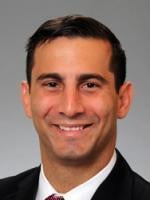On November 1, 2022, the Centers for Medicare and Medicaid Services (CMS) finalized new policies related to remote therapeutic monitoring (RTM) services reimbursed under the Medicare program.
The changes, part of the 2023 Physician Fee Schedule final rule, clarify CMS’ position on how it interprets requirements for RTM services. The final rule rejects some of the proposals released in July 2022, and builds upon previous RTM guidance, including changes allowing general supervision for purposes of “incident-to” billing.
The following RTM Frequently Asked Questions are based on the CMS policies and commentary contained in the 2023 Final Rule.
1. What Is Remote Therapeutic Monitoring?
RTM is designed for the management of patients under a specific treatment plan using medical devices that collect non-physiological data related to signs, symptoms, and functions of a therapeutic response that provide a functionally integrative representation of patient status.
The six primary Medicare RTM codes are Current Procedural Terminology (CPT) codes 98975, 98976, 98977, 98978, 98980, and 98981. The structure and nature of RTM services resemble remote patient monitoring (RPM) services. (Read more about RPM rules here and here.) While there are similarities between RTM and RPM, there are notable differences.
2. Who Can Order and Deliver RTM?
Physicians and eligible qualified health care professionals, are permitted to order and bill RTM as general medicine services. A physician or other qualified health care professional is defined in the 2023CPT Codebook as:
“an individual who is qualified by education, training, licensure/regulation (when applicable) and facility privileging (when applicable) who performs a professional service within his/her scope of practice and independently reports that professional service.”
Accordingly, RTM codes could be available for physicians, physician assistants (PAs), nurse practitioners (NPs), physical therapists (PTs), occupational therapists (OTs), speech-language pathologists (SLPs), and clinical social workers (CSWs). CMS has stated the primary billers of RTM codes are projected to be physiatrists, nurse practitioners, and physical therapists.
3. Can RTM Be Billed “Incident To”? If So, What Supervision Level is Required?
Yes, beginning January 1, 2023, physicians and certain non-physician practitioners (e.g., PAs and NPs) may bill for services furnished by clinical staff under general supervision, provided that the other requirements for “incident to” services are met. However, for other qualified health care practitioners (e.g., CSWs, CRNAs, PTs, OTs, SLPs), RTM services must be personally furnished by the billing qualified health care practitioner or, in the case of a PT or OT, by a therapy assistant under the PT’s or OT’s supervision.
The two RTM treatment management codes (CPT codes 98980 and 98981) were initially created under the “General Medicine” category, not the “E/M Services” category. Accordingly, as discussed in our previous post, a practitioner could not order and bill for RTM services while having remote-based clinical staff perform the work under general supervision.
In an attempt to address these supervising and billing limitations, in the July 2022 proposed rule, CMS proposed to replace CPT codes 98980 and 98981 with four new specific Healthcare Common Procedure Coding System (HCPCS) G-codes to expressly permit general supervision of auxiliary personnel by physicians and non-physician practitioners while also allowing certain other qualified health care professionals to furnish RTM services directly. However, after reviewing the public comments, CMS acknowledged that “confusion remains about how the new G-codes, if finalized, would or would not possibly create a chilling effect on the availability of RTM services.” Consequently, CMS decided to scrap the proposed G-codes and instead elected to modify its supervision policy for services furnished “incident to,” allowing general supervision for CPT codes 98980 and 98981. This general supervision is consistent with what CMS has done in the past for certain designated care management services. In the Final Rule, CMS stated, “Any RTM service may be furnished under general supervision requirement.”
In 2023, practitioners eligible to bill Medicare “incident to” (e.g., physicians, NPs, PAs) will be able to do so for CPT 98980 and 98981 under general supervision. However, “incident to” billing typically is not part of the Medicare benefit for other qualified healthcare practitioners (e.g., PTs, OTs, SLPs), with limited exceptions. Such practitioners will not be able to leverage clinical staff under general supervision when furnishing the RTM services, meaning their RTM services must be personally furnished by the billing qualified health care practitioner or, in the case of a PT or OT, by a therapy assistant under the PT’s or OT’s supervision.
4. How much time is required to bill for RTM Treatment Management Services?
CPT code 98980 requires a minimum of 20 minutes of time in a month dedicated to RTM treatment management of the patient. This time must also include at least one interactive communication with the patient during the month (i.e., via phone or video). Read what it means to have an interactive communication with a patient here at FAQ #6.
CPT code 98981 has the same requirements as CPT code 98980, except it is used for additional 20 minutes per month, as an add-on code.
5. Can RTM Be Used for Non-Physiological Data?
Yes, RTM is designed for the management of patients using medical devices that collect non-physiological data. Data around indicators such as therapy/medication adherence, therapy/medication response, and pain level can be collected and billed under the RTM codes. Under these codes, CMS recognizes “therapeutic” data—not just “physiologic” data—as an important category of patient information that can be assessed remotely. Whatever the data monitored, all RTM services must be reasonable and necessary in order to meet Medicare’s minimum billing eligibility, so the clinical use case and why the patient is being monitored is important to consider.
6. Is RTM Limited to Specific Body Systems?
Yes, the clinical use cases eligible for device supply reimbursement under RTM are limited. Namely, CPT 98976 is only for transmissions to monitor respiratory system, and CPT 98977 is only for transmissions to monitor musculoskeletal system.
In the 2023 final rule, CMS added a new code (CPT 98978) for transmissions to monitor cognitive behavioral therapy (CBT) and finalized its proposal to accept the American Medical Association’s recommendation to contractor price this CBT device code for 2023. Contractor priced status means the value and payment for CPT 98978 will be established at the discretion of each local Medicare Administrative Contractor (MAC) and could vary nationally. Practitioners will need to refer to their local MACs for specific coverage and billing guidelines of CPT 98978.
Despite requests from industry stakeholders for the development of a generic RTM device code, CMS declined to create one agnostic to the specific body system involved or therapy type the device monitors. Instead, CMS is seeking stakeholder comments to better understand the costs, data, and utilization of expanding to additional systems and conditions. Thus, in 2023, payment for RTM remains limited to services that support an episode of therapy where the clinical issue ties to musculoskeletal, respiratory, or cognitive behavioral therapy.
7. Can RTM data be self-reported by the patient?
Yes, CMS stated the RTM data can be objective device-generated data or it can be subjective inputs reported by a patient.
8. What type of device or technology qualifies under the RTM codes?
RTM requires the use of a medical device as defined under the federal Food, Drug, and Cosmetics Act (i.e., not merely a wellness device).
Many advocates asked CMS to clarify the kinds of technology covered under CPT codes 98975, 98976, and 98977. Some commenters gave examples of the kinds of technology they believe these codes should cover, such as Software as a Medical Device (SaMD), use of artificial intelligence (AI), machine learning algorithms (ML), and other related evolving technologies. Unfortunately, CMS did not offer any specifics in the final rule on what technology qualifies, instead noting that its proposals do not include a specific RTM device list, nor specific examples of RTM devices that would be appropriate for use when furnishing RTM services.
9. How Many Days of Data Must the Device Monitor?
CPT codes 98975, 98976, 98977 and 98978 require the RTM device to monitor at least 16 days of data per each 30-day period, in total.
10. How Many Practitioners Can Bill RTM Device Codes Per Patient, Per Period?
Only one practitioner can bill CPT codes 98975, 98976, 98977 and 98978 during a 30-day period and only when at least 16 days of data have been collected on at least one medical device. “Even when multiple medical devices are provided to a patient,” CMS explained, “the services associated with all the medical devices can be billed by only one practitioner, only once per patient, per 30-day period, and only when at least 16 days of data have been collected.”
11. Can RTM Also Be Billed with Remote Physiologic Monitoring (RPM)?
No, the RTM codes cannot be reported in combination with the RPM codes (e.g., CPT 99453, 99454, 99457, 99458). Additionally, when a more specific code is available to describe a service, the CPT Codebook dictates that the more specific code should be billed.






 />i
/>i

